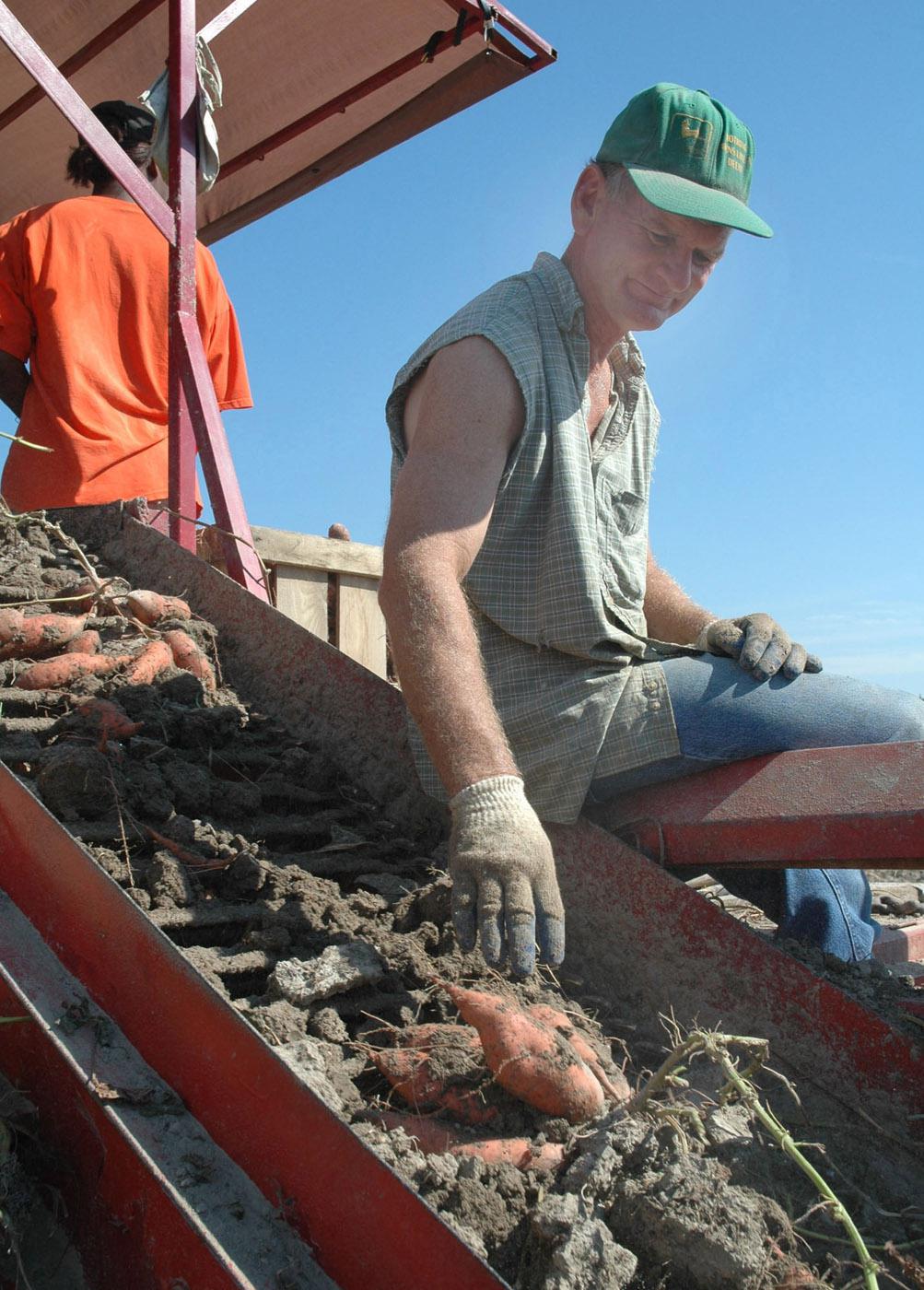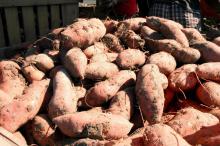Information Possibly Outdated
The information presented on this page was originally released on October 7, 2005. It may not be outdated, but please search our site for more current information. If you plan to quote or reference this information in a publication, please check with the Extension specialist or author before proceeding.
Sweetpotatoes benefit from three hurricanes
MISSISSIPPI STATE -- Hurricanes Dennis, Katrina and Rita actually helped most of Mississippi's sweetpotato fields in 2005.
Bill Burdine, Mississippi State University Extension Service area agronomist in Chickasaw County, said although some isolated cases of rot may have occurred, none of the storms caused significant damage.
"Dennis, Katrina and Rita provided rains at mostly the right time for the crop's needs," Burdine said. "Katrina caused significant damage to area corn but helped the low-growing, ground-hugging sweetpotato plants."
When dry conditions were going to make farmers delay harvest because of the risk of skinning potatoes, Rita arrived.
"Skinning diminishes appearance and opens up disease sites, so Rita actually helped with the harvest," Burdine said. "Moisture kept going to the extremes throughout the season, too wet or too dry. In some cases, shapes aren't what we would like to see, and that may result in more No. 2 and canning potatoes."
The Extension agent said insect pressure was low in 2005.
"Growers have done a good job monitoring for foliar pests," he said. "Most problems are soil insects: wireworms, cucumber beetles and white grubs. Flare ups have been pretty intense."
Benny Graves, sweetpotato specialist with the Mississippi Department of Agriculture and Commerce's Bureau of Plant Industry, said the state's 16,000-acre crop is more than 60 percent harvested.
"Farmers are ahead of schedule, and they are maximizing equipment and personnel to get the crop out of the field as quickly as possible," he said. "Overall, yields and quality are good. There are some isolated fields that have not produced a good crop. We're coming off two years when the overall state crop really wasn't very good, so growers are more excited about the potential for this year's harvest."
Graves said farmers are harvesting an average of 275 bushels per acre of field packs (No. 1 and No. 2 size potatoes). Storage conditions have been excellent, and harvested potatoes are curing in a timely fashion with very little shrinkage. Temperature control storage is enabling most operations to store potatoes year-round, which leads to sweeter potatoes.
Graves said fuel prices have driven up production costs more than 20 percent.
"This is the most costly crop ever," he said. "As an intensively grown root crop, sweetpotatoes require a lot of fertilizer. The crop needs 800-1,000 pounds of fertilizer per acre. When fuel prices go up, fertilizer costs go up, too."
Stephen Bailey, president of Mississippi Sweetpotato Council, said prices appear to be in the average to slightly above-average range.
"North Carolina has 10,000 fewer sweetpotato acres than they planted last year, which should help our prices. We're hoping it helps our prices hold steady throughout the harvest season with less of a slump right before Thanksgiving and Christmas," he said.
Bailey said growers are looking forward to the 32nd annual Sweet Potato Festival in Vardaman Nov. 5-12.
"This community is proud of the impact the sweetpotato industry has on this area," he said. "The festival provides a good opportunity to show off the product and give credit to the people involved in the industry."
The Calhoun County event attracts thousands to the area each year. Festivities begin with an arts and crafts event on Nov. 5 and concludes with a banquet on Nov. 12. For more information on the festival, visit its Web site at http://www.vardamansweetpotatofestival.com.




